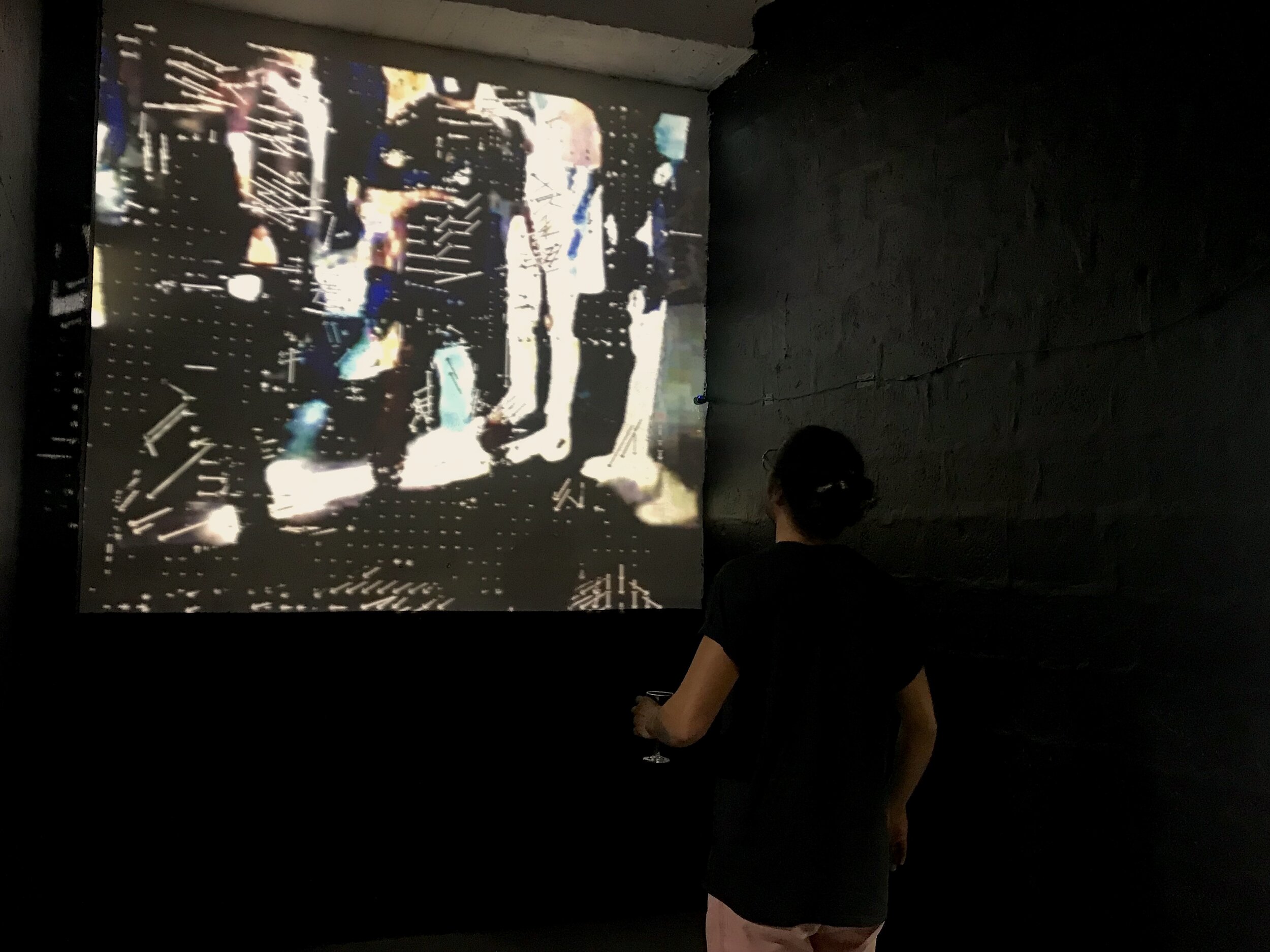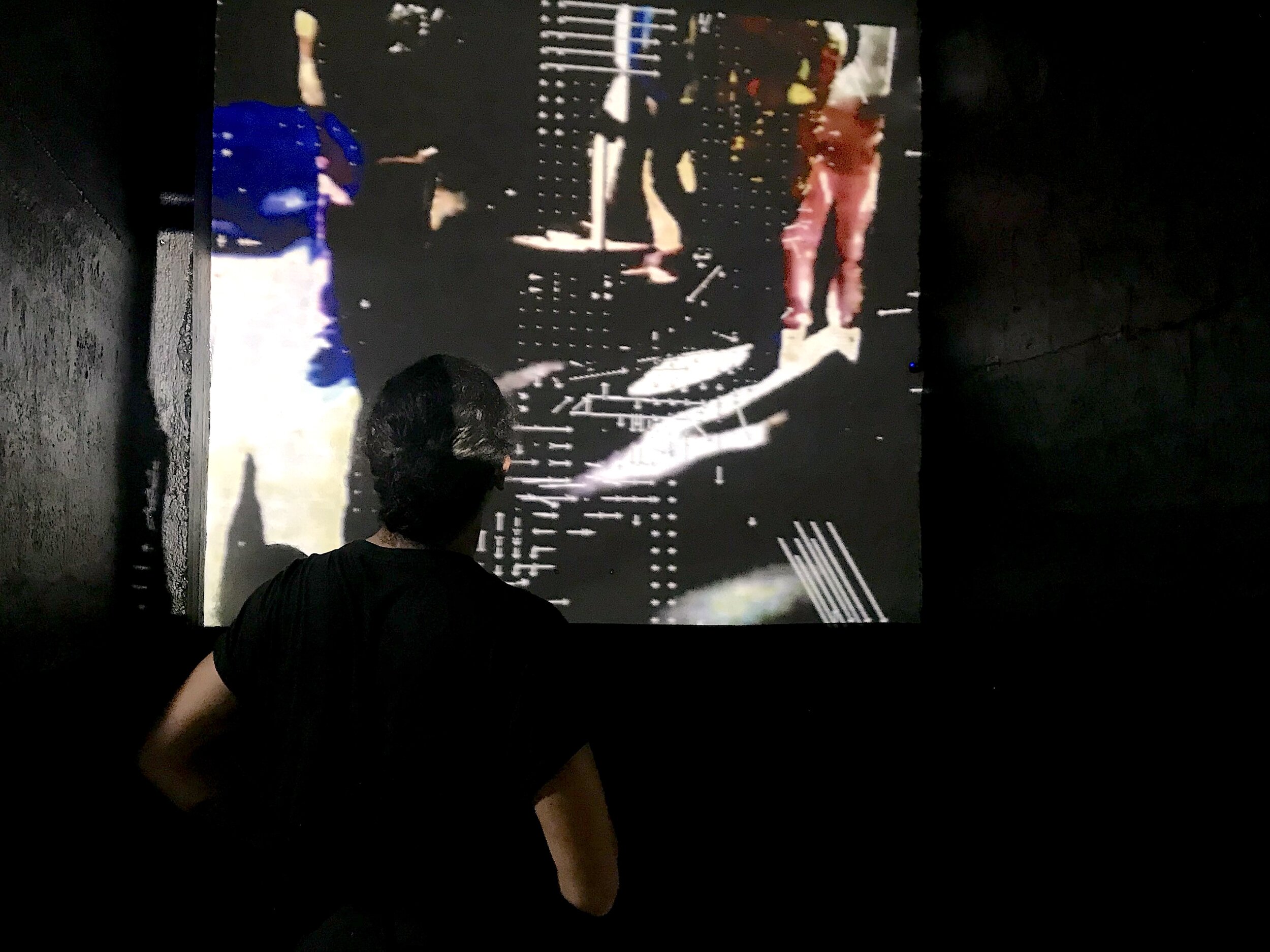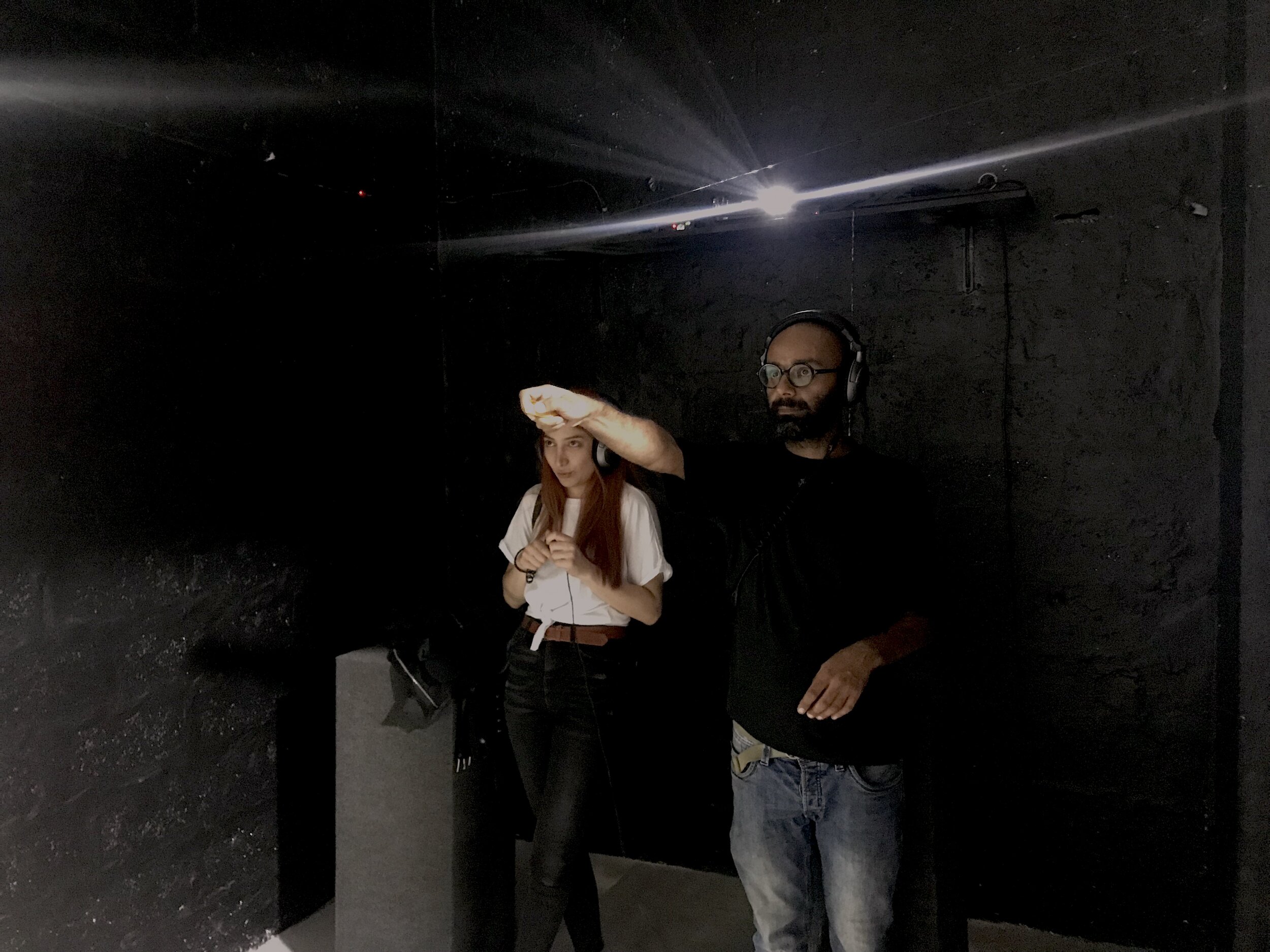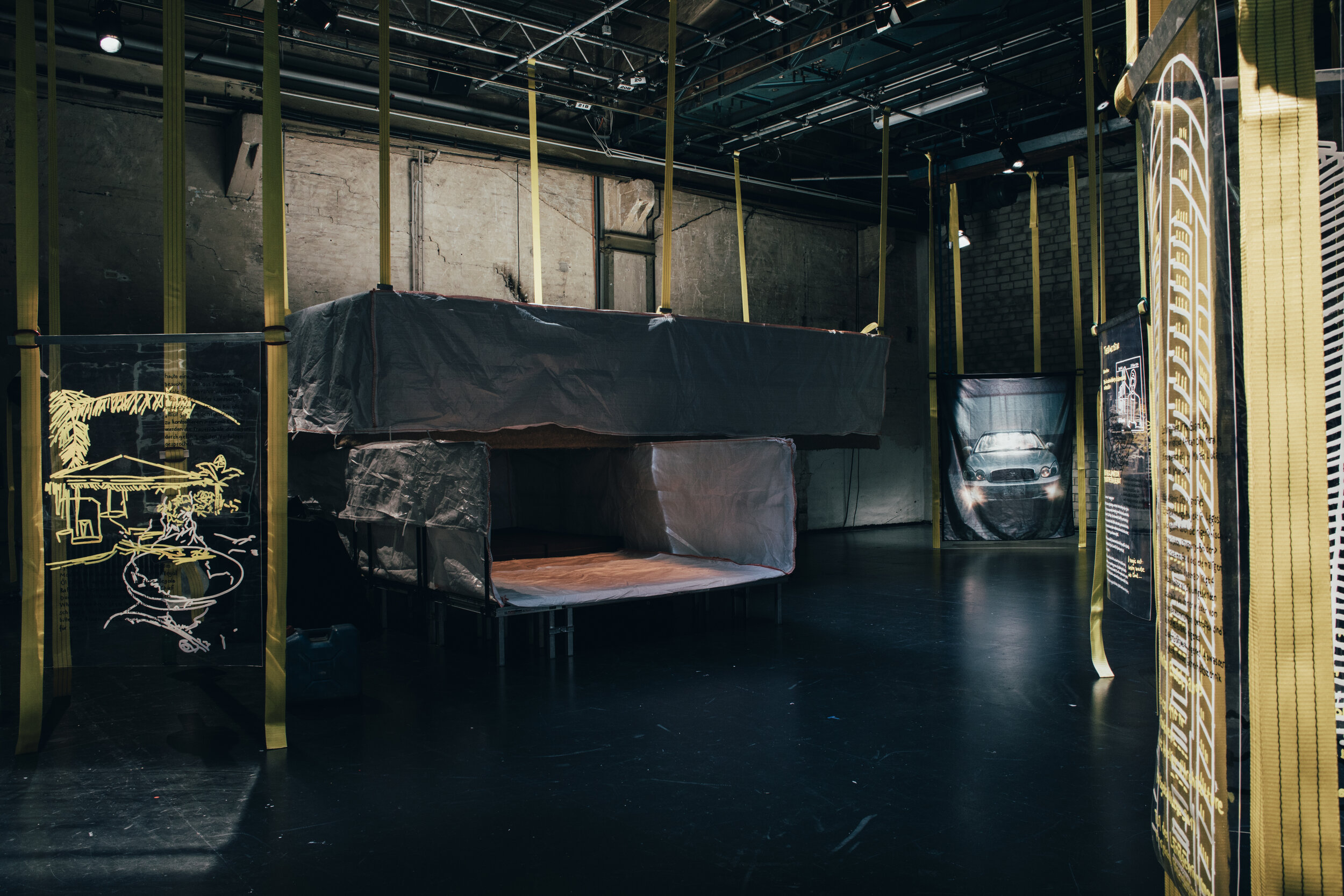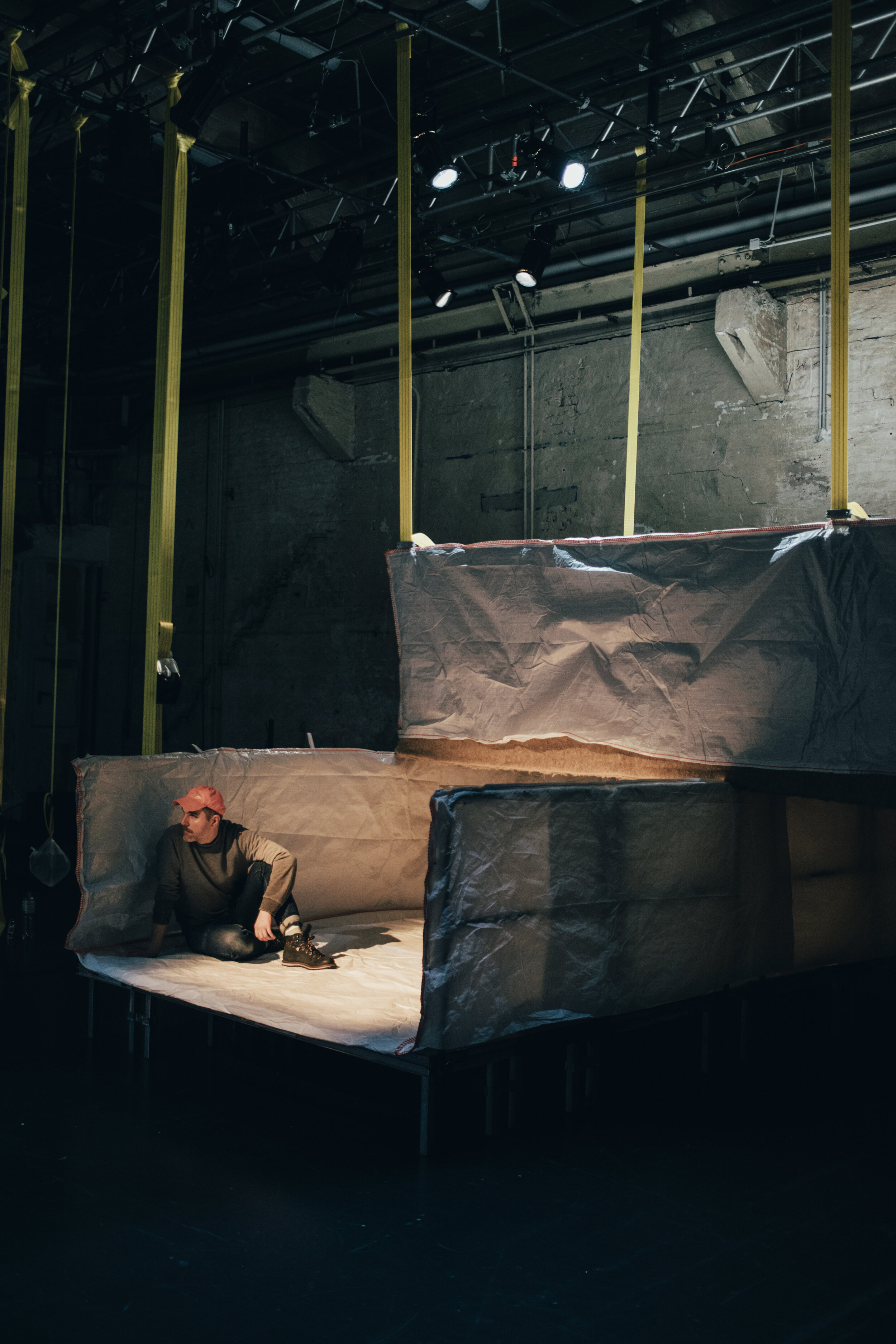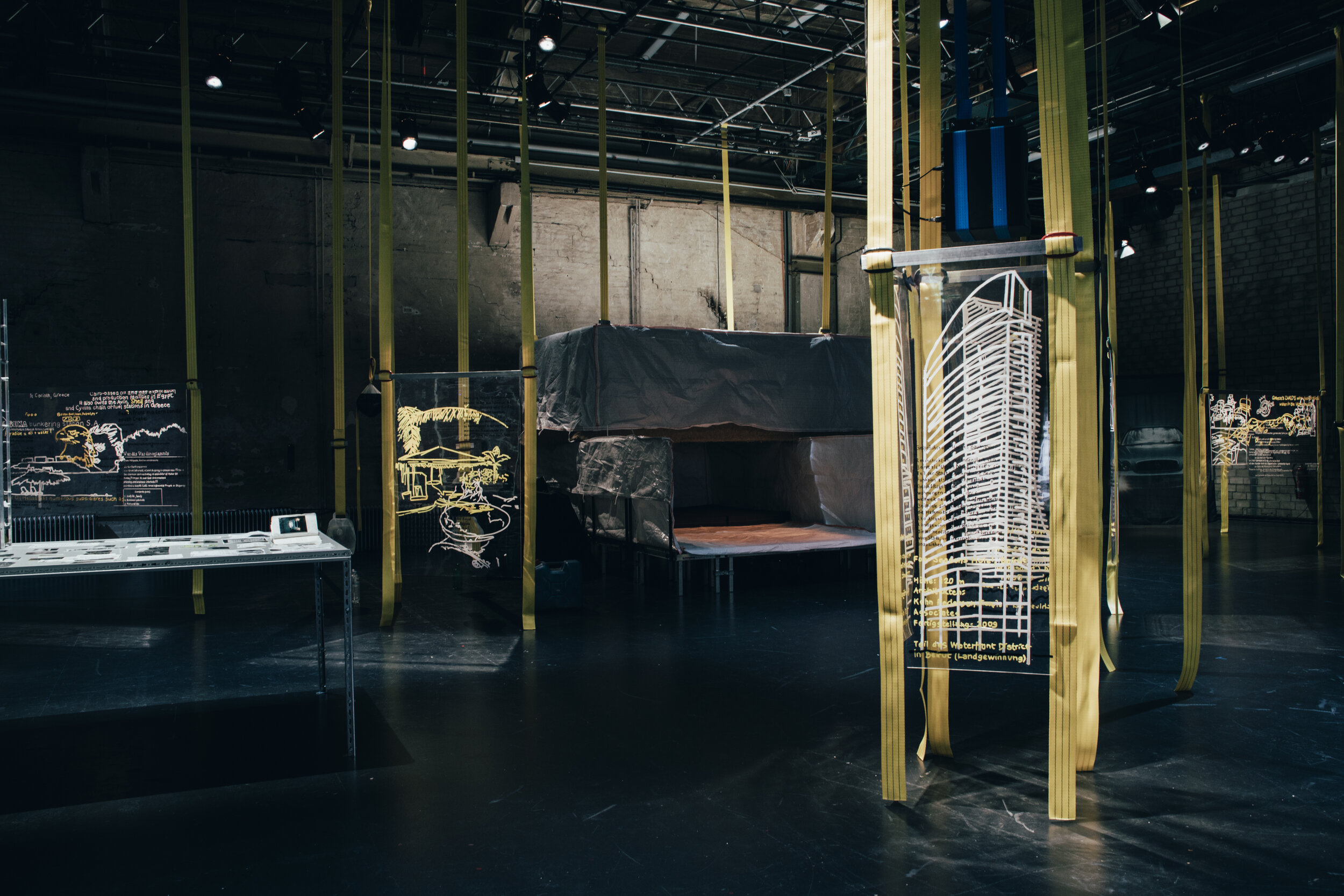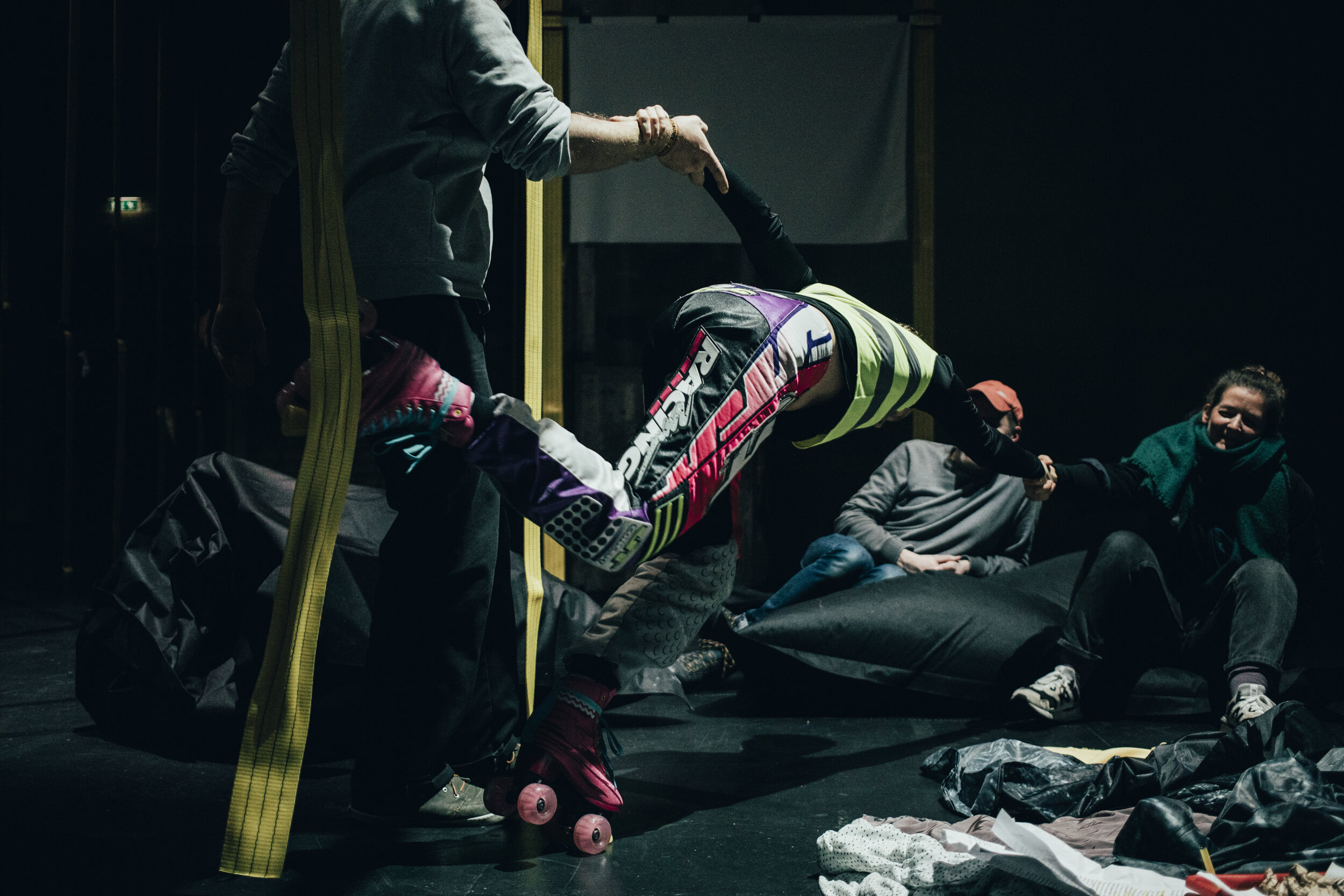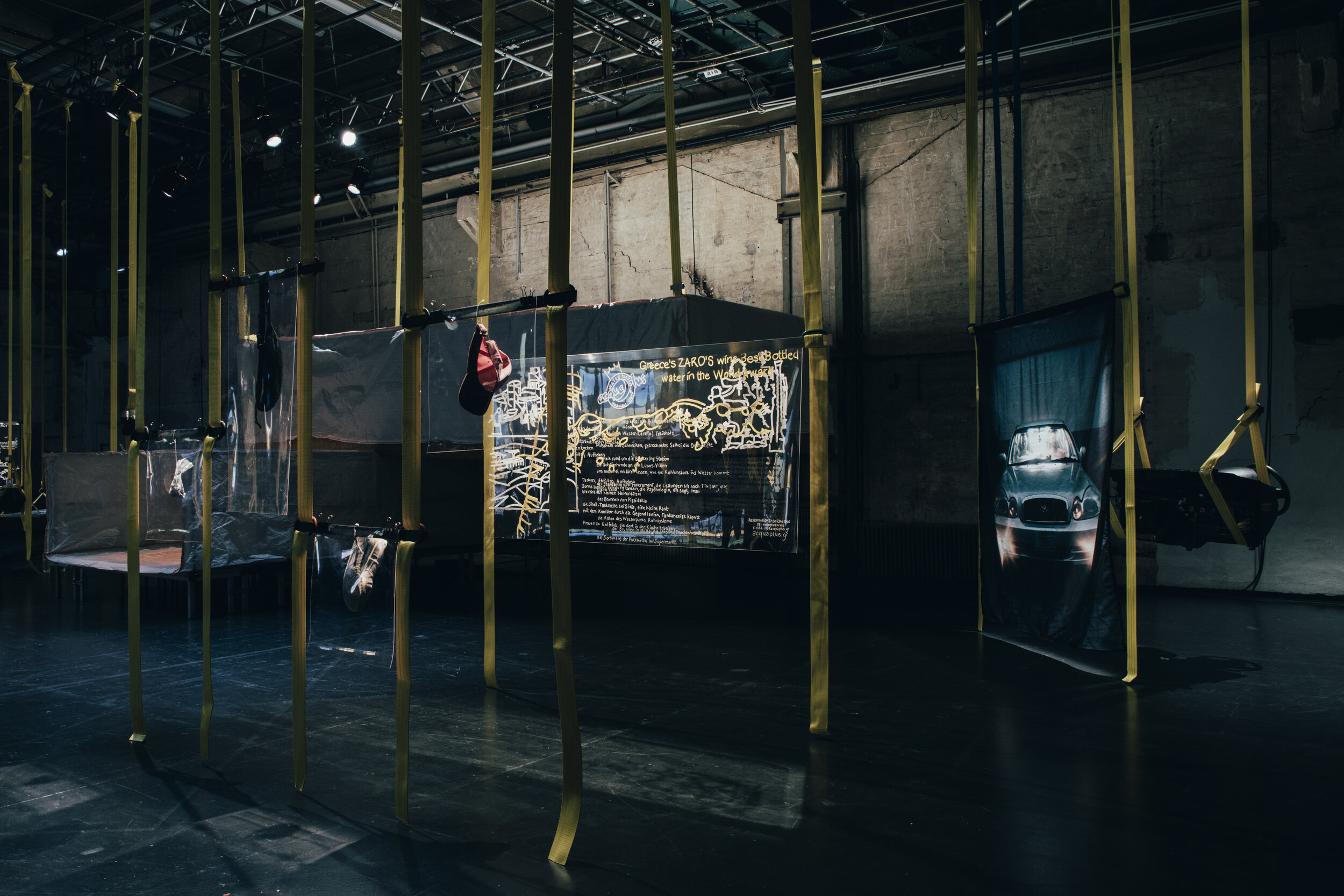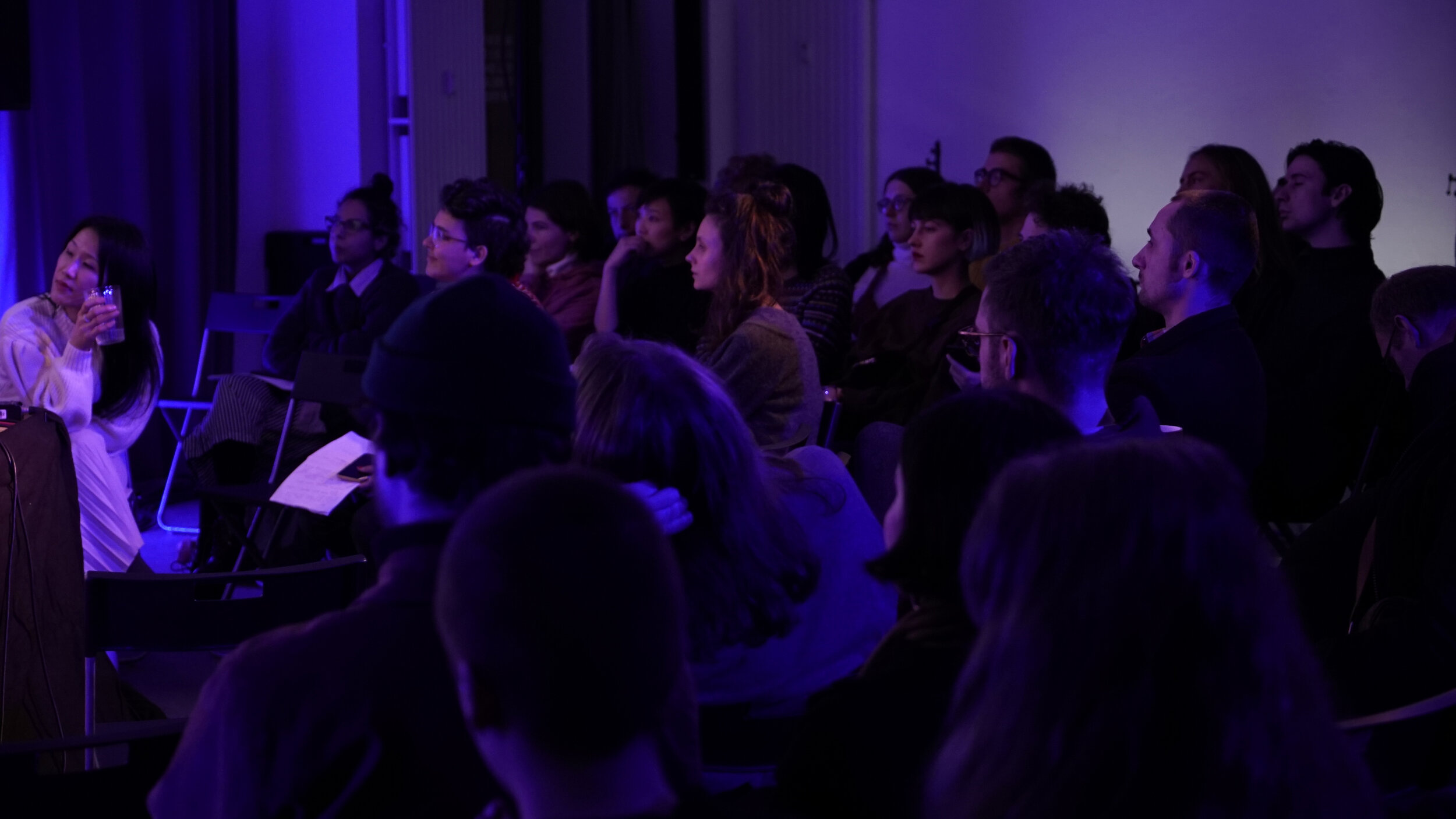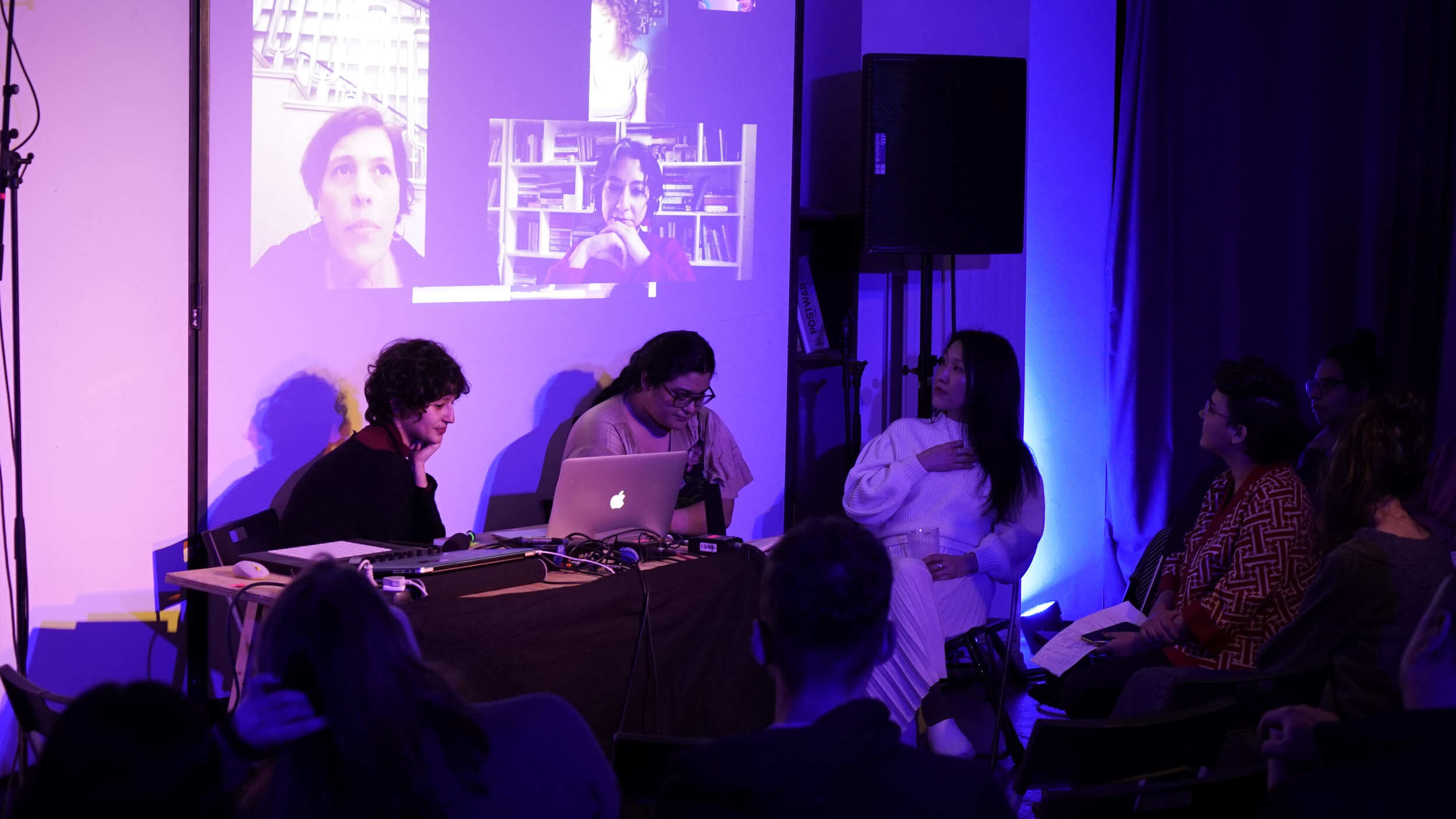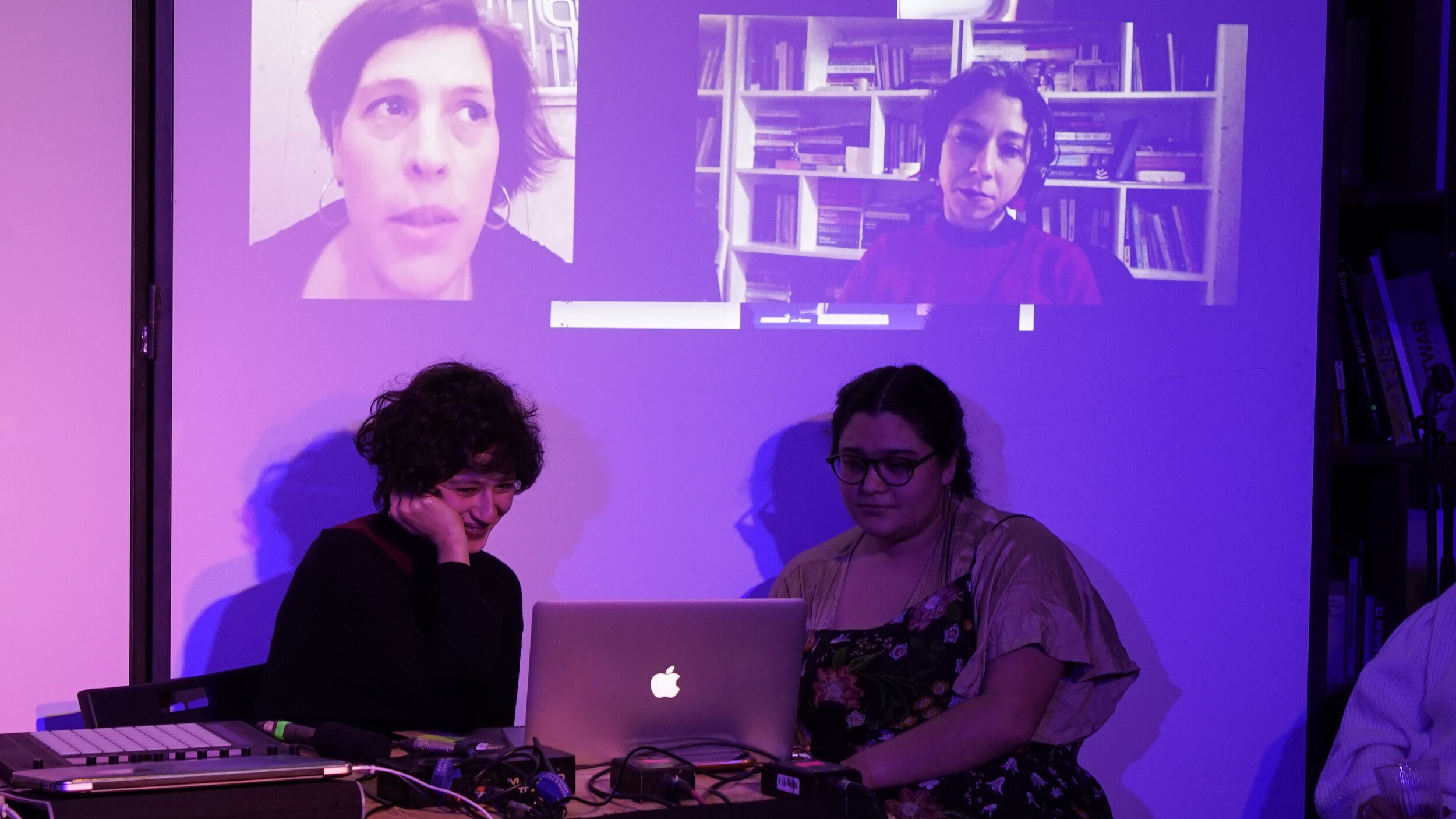Nour Sokhon
Artist | Sound Designer | Composer | Moving Image
2020
Resisting Turbulence
“Resisting Turbulence” is composed of a selection of photographs taken by Myriam Boulos and manipulated field recordings by Nour Sokhon. The project started with both artists conducting a series of interviews arbitrarily as they were walking across the streets of their war-torn city, their home, Beirut. This interdisciplinary collective project, in association with the “Nouvelle Nahda” team, aimed to answer these questions: What if a renaissance happened in Lebanon? If so, what would that look like? In a matter of just a few days, after the interviews had been recorded, the Lebanese revolution began. From that point on, it felt necessary to incorporate the events of the unfolding revolution into the questions that are a part of “Nouvelle Nahda”. As carriers of intergenerational post-war trauma, both artists are fuelled by the notion of infinite possibilities for a reawakening to take place in a city that is burdened by a constant state of restlessness. The interviewees that willingly shared their personal narratives with meticulous detail shone light upon people’s desire to be heard. “Resisting Turbulence” morphed into a timeline of people’s state of paralysis before the revolution and awakening after it began.
To find out more information about Nouvelle Nahda (episode 1) an international co-production between Neumarkt Zurich and Station Beirut, click here to view the online publication.
What is Left of Us
“What is Left of Us” is an interactive audio-visual art installation which takes place in real-time. The audience is able to see remnants of themselves passed through digital compression; hearing and seeing the ghost components of their digital identity. A live capture system subtracts the compressed audio and video to its raw counterparts, pushing to the forefront the data that isn’t judged essential via compression algorithms. The effect shows what is lost when the media is uploaded online. This installation acts as a mirror, encouraging the viewers to self-reflect upon their cyber activism. The internet is a form of controlled dissonance, which has been fed into the capitalist system. It has been used to monitor and track citizens, and in some cases, through state terrorism. Displaying their remnants live, shows them a different side of the digital sphere, one that has no boundaries and that is weapon-like, giving the public an opportunity to re-appropriate what is theirs by starting with what technology does not want us to see. We add to the feed of the web by using social media, contributing daily, shattering our image intentionally, we unconsciously subscribe to the to the inherent politics and standards of proprietary media.
Kaspar Ravel & Nour Sokhon
Volatile grounds
“Volatile Grounds” is an auditory installation which is part of a performative installation entitled The Great Report, which took place in Kampnagel, Hamburg.
“Volatile Grounds” embodies the privatisation of lands and the mismanagement of waste. The incessant neglect in which our hand in nature and lack of respect towards the environment caused this situation to escalate, and is one that requires our urgent attention. We have already reached a critical point where the repercussions of our actions have led to mass suffering, such as high levels of food and water contamination, medical setbacks, and further detrimental effects towards the people. We cannot continue with this downward spiral lest it leads to the further demise of the entire country and its citizens.
Anonymous:
“…we hear from time to time that someone got into the hospital and was cured getting out he contracted a virus so this virus contracted is due to the storage of the psychotoxic thats in the hospitals and there are some apartments within Beirut where are stored these kind of psychotoxics”
The soundscape is composed of interview material collected in 2019 from anonymous activists a few months before the start of the revolution in Beirut, Lebanon. The content centres around the waste management crisis and land reclamation issue present in the region. The raw and manipulated field recordings work as metaphors to convey the constant disharmony present in the country. For instance, crow sounds are used to represent death and the abyss. On the other hand car horns describe the sonic environment of the country and that change needs to happen in order for it to stand back on its feet. The sonic score maintains a high level of density throughout most of the composition, similar to how the country’s citizens have been honking at the politicians for years. Coincidently during the early production phase of the project in October 2019 the revolution broke out in the country, which unveiled concealed truths that these anonymous activists had shared in the interviews.
We give thanks to all the anonymous activists that have contributed their time to Volatile Grounds and The Great Report.
Interview Material: Moritz Frischkorn & Nour Sokhon “Volatile Grounds” (Sound installation): Nour Sokhon Artistic Director: Moritz Frischkorn Photographer: Robin Hinsch
Live Performance/ Co-creation: Maria F. Scarano / Scenography: Vladimir Miller / Sound/Music: Katharina Pelosi / Dramaturgy: Heiki Bröckerhoff / “Logistics of Paradise (Video, Text, Installation): Paula Hildebrandt / “Wahala” (Photography, installation): Robin Hinsch / Video: Bianca Peruzzi / Light: Rucarda Schnoor / Production Management: Annalena Kirchler / Cooperation Research: Lucie Schröder / Video editing “Logistics of Paradise”: Anna Fiedler / Participation stage design: LU’UM
To visit The Great Report page click here.
HEYA - Arts Birthday 2020
“Deutschlandfunk Kultur / SAVVY Contemporary Berlin, ORF Ö1 Kunstradio, Vienna
Heya [heeya] (‘she’ in Arabic and also a friendly greeting in English) is a research project facilitated by PhD researcher, sound artist and composer Jilliene Sellner (University of Sussex, UK) that works towards bridging women who make sound, noise, field recordings, experimental music, and electronic music with each other and a global audience. The main geographical areas of focus are Cairo, Tehran and Beirut as a set of examples of homogenous contexts but which all have blossomed since the Arab and Green Springs.The work is a live networked performance collaboration between Nour Sokhon (LE) in Berlin, Jilliene Sellner (CA/UK) in Vienna, Yara Mekawei (EG) in Cairo and Zeynep Ayşe Hatipoğlu (TU) in Istanbul*. The performance uses collaborative ‘distributed listening’ app LiveShout (developed by Dr Franziska Schroeder and Prof Pedro Rebelo at Queens University, Belfast) and the LocusSonus soundmap so that performers can ‘jam’ remotely.
Mixing and reacting to each other’s field recordings and sonic experiments, collaboration becomes a horizontal and egalitarian method of decolonising musicological research, circumventing top down, traditional methods and conclusions. The limitations of the online platforms in addition to unstable internet access presents challenges to the collaborators. The experiment’s aim is not necessarily to present a beautiful sonic piece or score but to reflect on the artists’ experience of playing together apart.
For Art’s Birthday the artists will explore sonic experiments centered around the theme of ‘protest’ and finding the act of subverting limitations based on gender, citizenship and location through networked collaboration as a sort of protest in and of itself. This is apt at this time as while in the process of organising the performance, Tehran rose against the regime and our colleague who was to participate was uncontactable due to the authorities implementing and internet blackout. The improvisation will include live cello, prepared sounds and field recordings from a market in Cairo.”
To have to a listen to the excerpt click here.
Rectification of The Wretched
“Rectification of the Wretched” is composed to remind her people that there are still dreams that they can seek.I am with the people, and seek reformation. Before the start of quarantine I used to find myself in the streets. At the moment I have lost hope, yet I find it necessary to not succumb to the dark pit of despair. My personal sense of empowerment, my weapon, rises and awakens through sound amidst all the chaos. I would like to rediscover the current turbulence we open our eyes to every morning by amplifying the silenced voices of the people. I would like to create a figment of hope through the power of imagination by asking locals one question. What do they dream of?
Interview Excerpts
(Names have been withheld to ensure privacy protection of the soundbite contributors)
“Unfortunately, when you are born in a country like Lebanon, if you have a dream it doesn’tgrow, it only gets smaller. So, now my dream is to just be able to reach a point where I can behappy in my life. As simple as that.”
“Today I dream that my neck and my shoulders aren’t locked all the time. I dream that my neck is no longer knotted. I dream to pick fruits from the trees, I dream to live.”
“When I was young, I used to dream of living in a very artistic environment. I am building artistic projects with a lot of people who are in turn, helping me. Having said, now my dream is to wake up and not find my parents following me worried with anxiety and mental health problems. My dream has become to find that there is space for my peace of mind, as a Lebanese national.
“I am dreaming of... What am I dreaming of? I dream to go back to my childhood and be happy and not worry about anything and think of anything. To go and make plans that don’t cost much, to enjoy the simple things and for it not to have a price. This was our pleasant childhood in Lebanon that we remember, we used to walk with our friends, go out and enjoy without worry.”
”My dream is to be free to love who I want.”
“So yes, I dream that the electricity would come and for it to stay when it comes. I would be able to sit in one place to write my script faster and of course, that would mean my concentration would be better if I don't have to keep switching rooms.”
“What am I dreaming of? I am dreaming that they will bring back my safety. I am dreaming that they will return my Lebanon to me.”
“I believe that my dream at the moment is to live in a place that is open to the world and not to feel trapped in it.”
“My dream is to have a nice house by the beach, but for Beirut's sea to be clean.”
“I dream to live in a world where people enrich nature like how nature enriches us. I dream to live in a world where there is less consumption.”
“I dream that my dad will come back to his country, to see him in his garden taking care of his house, picking his figs.”
“I used to dream that I had a western passport that would take me to all the countries in the world; the western passport that is my dream.”
What is interesting here is the processing of the narrative in the form of a sound non-fiction with the conscious purpose to bring into question broader political, social and economic issues. These are spoken through the complex and subtle requirements of a community, as Sokhon critically seeks to reconstruct previously invisible narratives to focus on recovery, collection and preservation of communal memories.
Sokhon intentionalizes such a portal of dreams and emotions as a process that unlocks or captures according to the potential of the moment and as a cathartic device with the interviewed and herself. Through oral histories as futures, Sokhon encourages more open modes to think about interactions not particularly concerned with solving problems, but rather aiming to act as a catalyst to redefine oppressive systems; and to build a meaningful dialogue about more complex structures that involve the public as active agents.
With this she allows for a different kind of thinking about the future that speaks to the needs and aspirations of her community and doesn’t belittle the experience of their life.
To listen to “Rectification of The Wretched” and view the full publication click here.
Composition and contributing text by: Nour Sokhon
Editor: Alifiyah Imani
Published by: Spatial Sound Institute
Before She Lost It
“Before She Lost It” is Nour Sokhon’s contribution to “This is Kafala”, a collection of experimental music, sound art and noise tracks created specifically for this project by a selection of composers and artists that includes Tse Tse Fly Middle East founder members alongside creators and friends that Tse Tse Fly have worked with over the years.
“The album’s tracks examine and explore themes around kafala, exploitation and modern-day slavery, and is a disorientating, difficult listen that reflects the true nature of the kafala system. The 'This Is Kafala' project is produced in association with Migrant-Rights.org, the non-profit organisation that advances rights of migrant workers throughout the Middle East.”
To listen to the full album, the track “Before She Lost It” and to find out more about the project click here.


